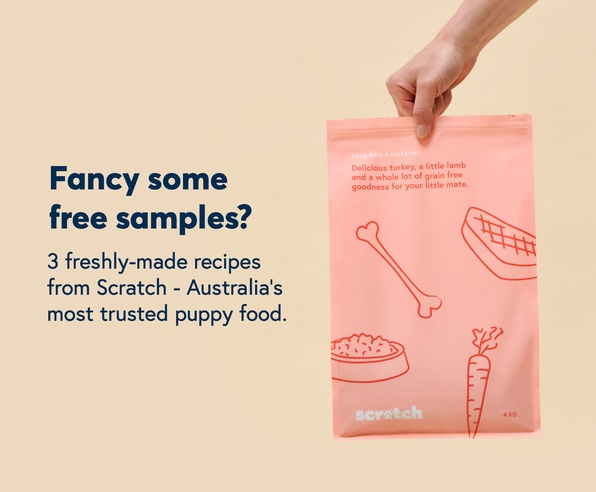Are Dogs Bad for the Environment?
As we all become more conscious of our carbon footprints, we’re probably starting to gaze over at our pets and wonder if it’s even possible to have an eco-friendly dog. In a widely read, quoted, and discussed 2009 BBC article, journalist Justin Rowlatt infamously argued that owning a pet created a larger carbon footprint that driving an SUV. As disturbing as that sounds, he may have been conservative: as of 2004, the ecological impact of a medium sized dog in the West was greater than that of the average citizen of Ethiopia.
Of course, that interpretation doesn’t factor in the benefits of living with animals. As Michael Bellingham, the chief executive of the Pet Food Manufacturers’ Association, rebutted to the Guardian: “Our environment, far from being threatened by pets, is greatly enriched by the part they play in our lives…Pets in the home instil responsibility, encourage social as well as environmental awareness and have positive health benefits on children.” He also added, “What large polluting car improves your health and gets you out for a walk every day?”
Luckily, in the decade since this topic first erupted, dog owners have become savvier about the environmental impacts of their pets. And as the market for green products has also grown, it’s now easier than ever to raise an eco-friendly dog.
Dog Food’s Environmental Impact
What we choose to eat–and feed our pets–can have a huge environmental impact. Dog’s diets are largely made up of meat; unfortunately livestock make up 15 percent of global emissions. In the US alone the environmental impact of dog food is equal to about a quarter of human meat consumption. But while we may be tempted to go vegan or vegetarian for the environment, it’s harder for dogs to meet their nutritional needs without meat.
Additionally, dog food is largely made up of by-products of the human meat industry–so it can reduce the waste that goes to landfill. But buying locally produced, small batch, dog food from sustainable manufacturers can cut down on the environmental impact. Smaller, eco- friendly dog food brands are also often more vigilant about sourcing meat sustainably, reducing waste, and cutting down on food miles.
Making your own food and treats also allows you to tackle waste, reduce packaging, and avoid unsustainable ingredients such as palm oil. On the subject of waste, it’s worth also remembering that many pets are overfed, which contributes to obesity and food waste.
The Most Eco-Friendly Dog Poop Options
We’re going to assume you’re a good citizen who picks up after your pet. Leaving dog poop in the streets is gross and it can make people and animals sick. Poop contains pathogens that when washed into waterways damage the environment and spread disease.
But picking up after your pet with plastic bags that take a millenia to break down also causes issues: owners contribute roughly a thousand poop bags to landfill each year. Avoid all that by using biodegradable bags or an old-fashioned pooper scooper.
Some pet owners choose to bury or compost their dog’s waste. If you do that, be VERY CAREFUL to never use it to fertilize edible plants. For most of us, a biodegradable bag and a nearby bin is the simplest and greenest option.
Eco-Friendly Dogs Keep It Clean
Many of the grooming and care products we use on our pets end up being washed down the drain. So it’s worth making sure they don’t go on to damage our waterways and aquatic friends. When washing and cleaning up after your pet, choose eco products with natural ingredients. If you have a garden, opt for greywater safe products so you can water your (non-edible) plants with the leftover water.
Package free products like shampoo bars can also cut down on waste and packaging.
Not That Innocent
As hard as it is to admit, your pet themselves may also pose a significant environmental threat. Native species like Tassie devils, koalas, and many birds are vulnerable to dog attacks. But even if your pet is a pacifist, they can still destroy nesting areas or disrupt breeding and feeding cycles when off leash. To be safe and enjoy nature with your dog on leash unless they’re in a fenced off or designated area.
Other Eco-friendly Dog Tips
There are countless simple ways to make eco-friendly dog choicess each day. Some additional ones include: buying second-hand products, investing in metal or ceramic feeding bowls that will outlast plastic, homemaking toys and treats, recycling pet food packaging (including soft plastics), and supporting local businesses that don’t import products.
But some of the biggest decisions need to be considered before you even bring a pet home. For example, rescuing a pet from a shelter or adopting a smaller dog both make a big difference. So does spaying or neutering your dog.
Go Green Yourself
Remember your pet is part of your household, so the best way to have a green pet is to be a green owner. You can make a big environmental impact yourself by eating less meat, riding a bike or catching public transport, recycling and composting, and putting your money in an ethical bank and superfund. For more information on ways to reduce your own carbon footprint, check out this guide.
Eco Friendly Dog Businesses We (and Our Readers) Love
Healthy Dog Treats Made From Cricket Protein
For more green dog content, check out:
Is Insect-based Dog Food the next Pet Health Trend?
The Best Dog Friendly Plants for Happy Pets and Beautiful Gardens
While you’re here, subscribe to our newsletter, check out our magazine, and follow us on Instagram, Facebook, and Twitter.







